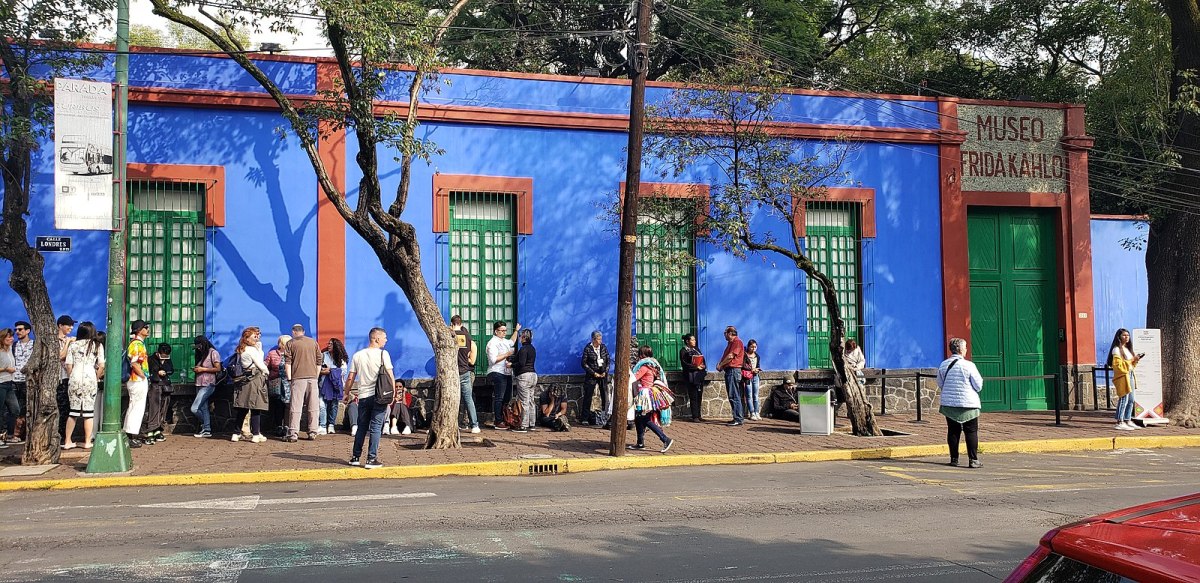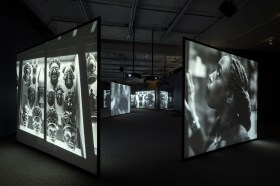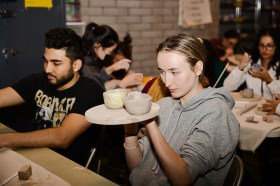Are you starting to plan a trip in 2024? Then why not consider visiting one of these incredible museums, which celebrate the lives of artists, and their studio practice?
There is something special about stepping in to an artist’s studio – it is kind of a sacred and introspective zone, and sits between a place of voyeurism and faddish fandom.
Many of these famous artists’ homes today are managed by their estates or foundations, so they offer a lovely blend of education and a “real-to-life” immersive experience.
ArtsHub takes a look at some of the most celebrated, and also the quirkiest, artists’ homes that are now museums you can visit.
Jump to:
South America
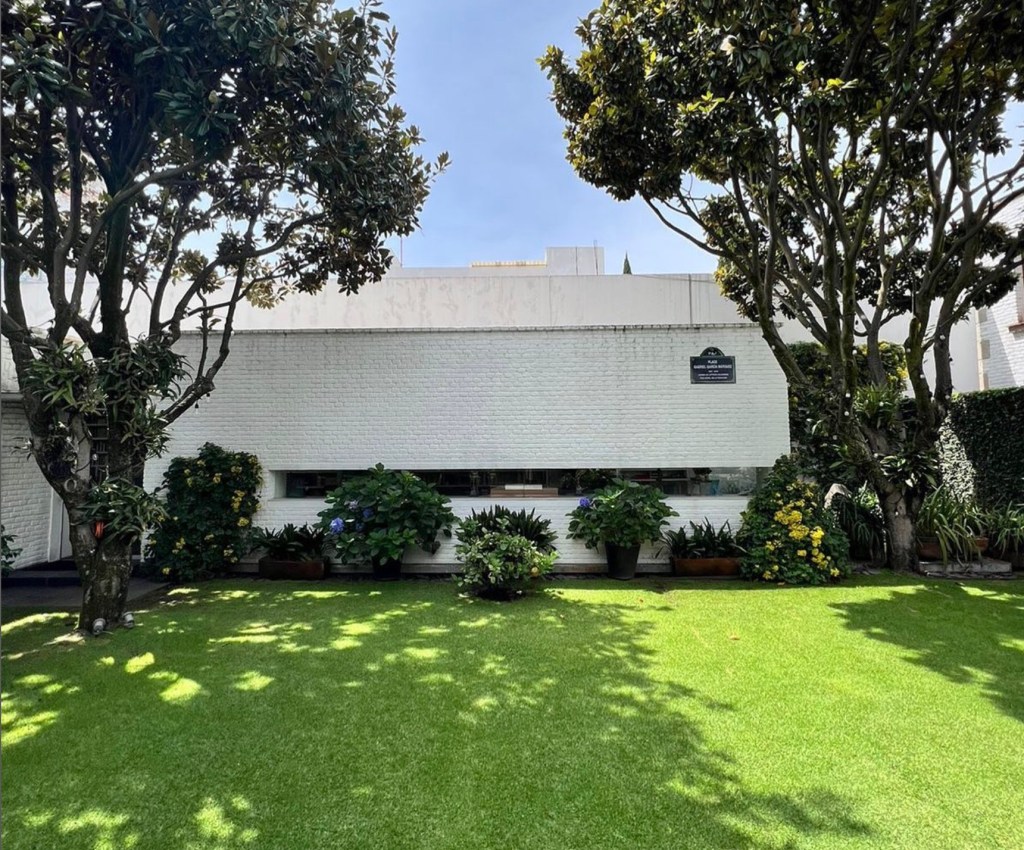
Gabriel García Márquez: Mexico City
Starting with a more recent addition to house museums, is Gabriel García Márquez’s Mexico home – La Casa de la Literatura García Márquez – which opened its doors as a museum in October 2021. The Colombian Nobel Prize-winning author lived there from 1975 until his death. It is a very tranquil place to visit, with a leafy, central garden, whitewashed brick structures, rustic stone masonry and wooden beams in the beating heart of Mexico City’s Pedregal neighbourhood. Thousands of books line the walls, as well as the famed author’s belongings. It is run today by his granddaughter, Emilia García Elizondo. More information on how to visit.
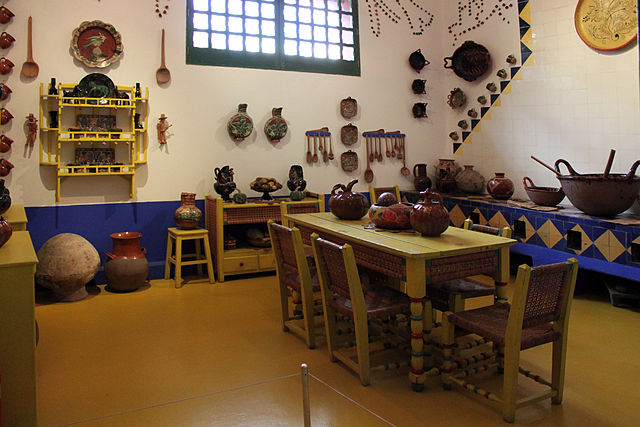
Frida Kahlo: Mexico City
From the newest to one of the most famous – and oldest – is La Casa Azul in Mexico City’s Coyoacán neighbourhood, known for its cobalt blue painted walls, and again set in lush gardens. It was in this house that Frida Kahlo was born (it was built by her father in 1904), lived and worked, and later died. The home was turned into a museum in 1958 and exhibits artworks and artefacts from Kahlo’s life – including a wardrobe of her clothes and her wheelchair. More information on how to visit.
Australia
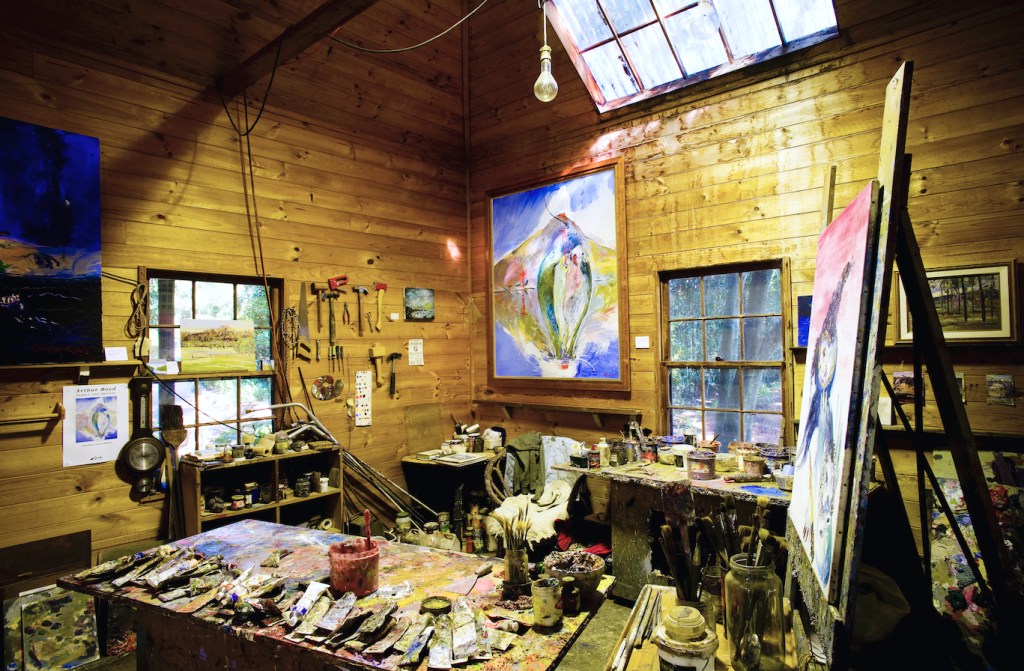
Arthur Boyd: Shoalhaven River, NSW
In 1973, Australian painter Arthur Boyd and wife Yvonne purchase Riversdale – or “the homestead” as it is known – a property that skirts the banks of the Shoalhaven River in regional New South Wales (NSW). It would become his home and studio from 1975 when he returned from London, and can be visited today. It is complete with half squished tubes of paint and Boyd’s paint-drizzled studio shoes.
The property was gifted to the Australian public in 1993, together with the adjoining property Bundanon, which in recent years has undergone a major facelift and expansion. Riversdale was closed for a period last year for damp-rectification to the heritage building, but is again open to visit. You can visit Boyd’s studio with a self-guided tour or a guided tour. It is open 10am-5pm on Saturday and Sundays.
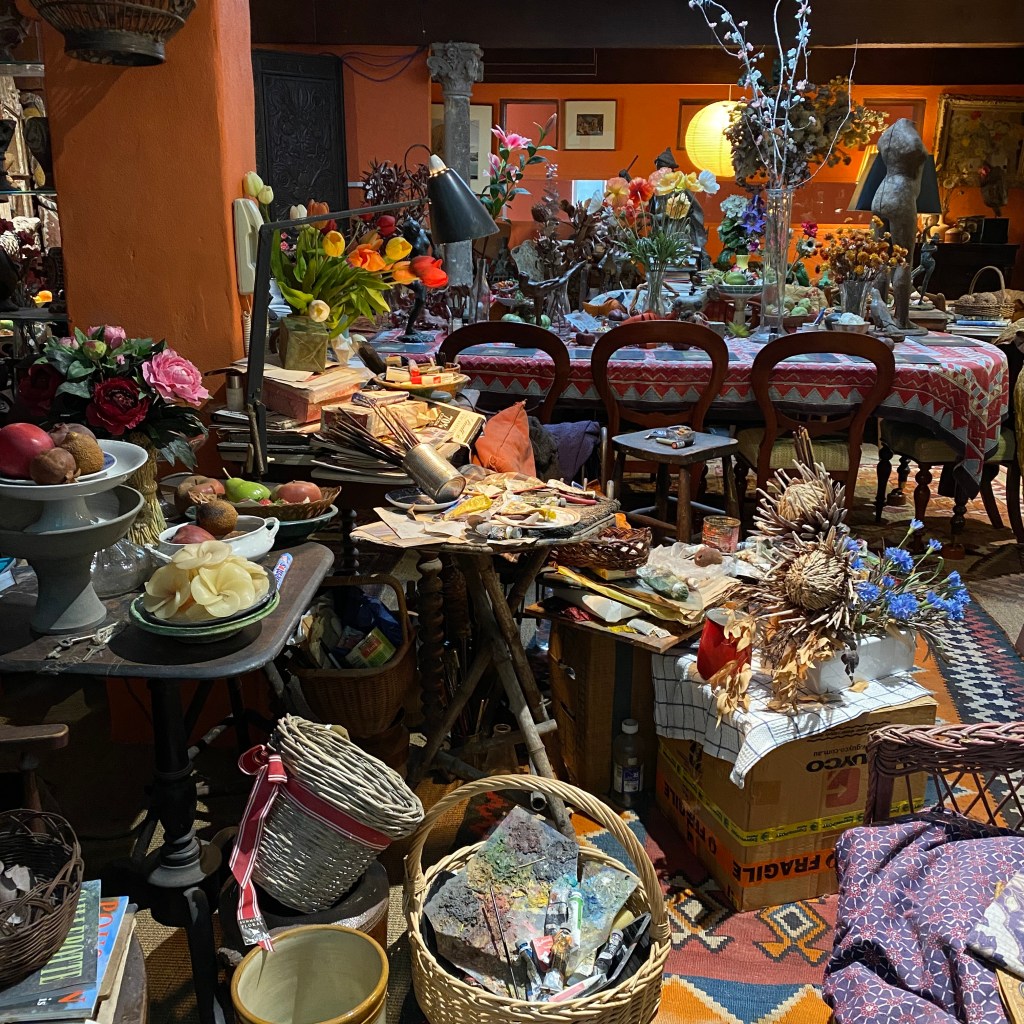
Margaret Olley: Tweed Heads, NSW
The Margaret Olley Art Centre (MOAC) was created in the final stage of the development of Tweed Regional Gallery in northern NSW. It is situated within the gallery, in a separate wing, and celebrates the career, life and legacy of its namesake, Margaret Olley – Australia’s most celebrated painter of still life and interiors.
While it is not Olley’s actual home studio (which was at 48 Duxford Street in Paddington, Sydney, and was sold by her estate), MOAC is the recreation of her most loved spaces to paint – in particular the Yellow Room with its original architectural elements, and over 20,000 items Olley collected as subject matter for her paintings. The home studio recreation is on permanent display. How to visit.
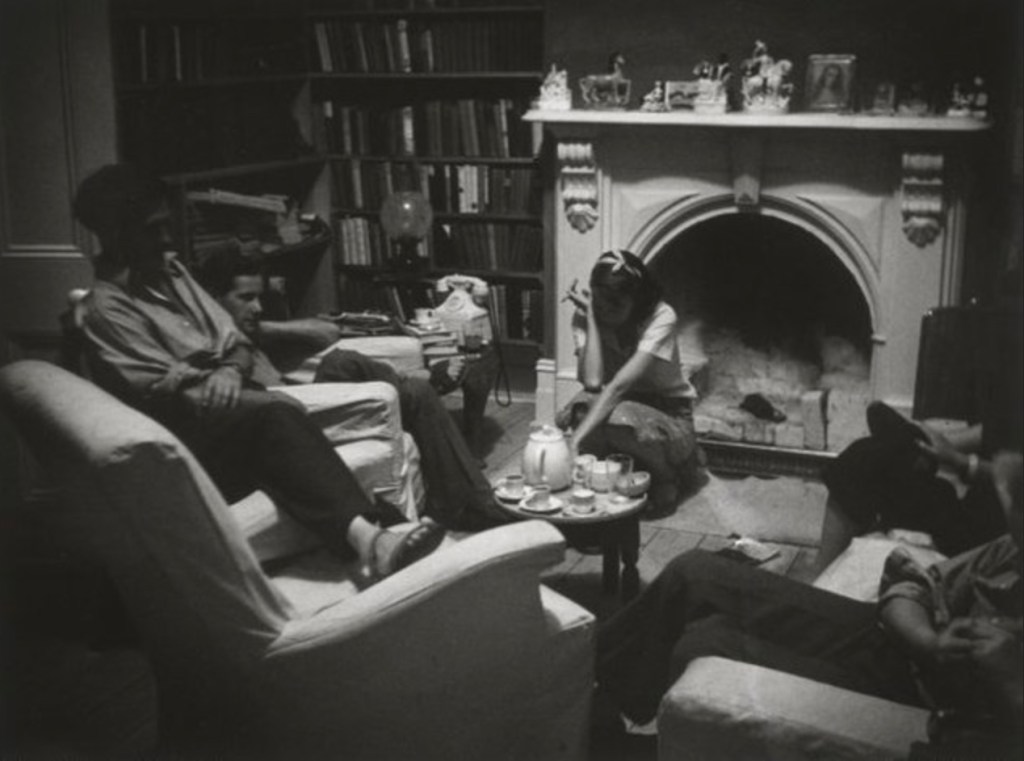
John and Sunday Reed: Bulleen, Vic
Home to art patrons John and Sunday Reed, Heide – later to become Heide Museum of Modern Art – has been a gathering place for artists and writers since 1934. Today, it is a major cultural institution on the outskirts of Melbourne, and continues their legacy of inspiring new thinking through art.
Part of the 15-acre property, which includes galleries and gardens, is the original farmhouse, now known as the Heide Cottage, and their architecturally designed home, commissioned in 1963 with the promising young architect David McGlashan briefed to create a ‘gallery to be lived in’. Both pay tribute to the Reeds’ story, and the like-minded individuals, such as artists Sidney Nolan, Albert Tucker, Joy Hester, John Perceval and Danila Vassilieff, who were frequent guests. How to visit.
UK
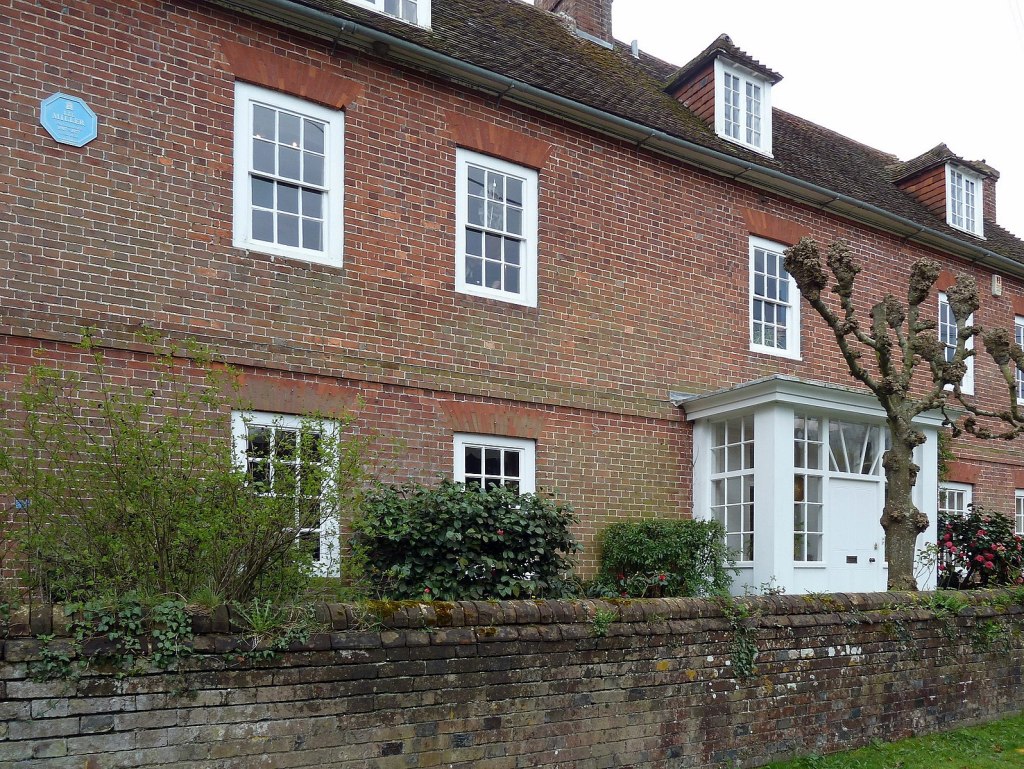
Lee Miller and Roland Penrose: East Sussex
US photographer Lee Miller’s work is currently showing shared this home with her husband, the artist Roland Penrose. They were both pivotal in the Surrealist movement, with London-born Penrose moving to Paris in 1922 to be in the “thick of it”, returning to London in the 30s to set up the Institute for Contemporary Arts.
The couple moved to Farley Farm House in East Sussex in 1949, after the birth of their only child. Behind the ordinary redbrick façade of the farmhouse, nearly every surface is adorned – from Penrose’s fireplace mural, to tiles by Picasso as the kitchen splashback. Many sculptures by their circle of friends also fill the gardens. The house is home to an archive of over 60,000 negatives of Miller’s works. And, a little like Boyd’s studio, the rooms have been left exactly as they were. Viewers will see full ashtrays and open books. How to plan your visit.
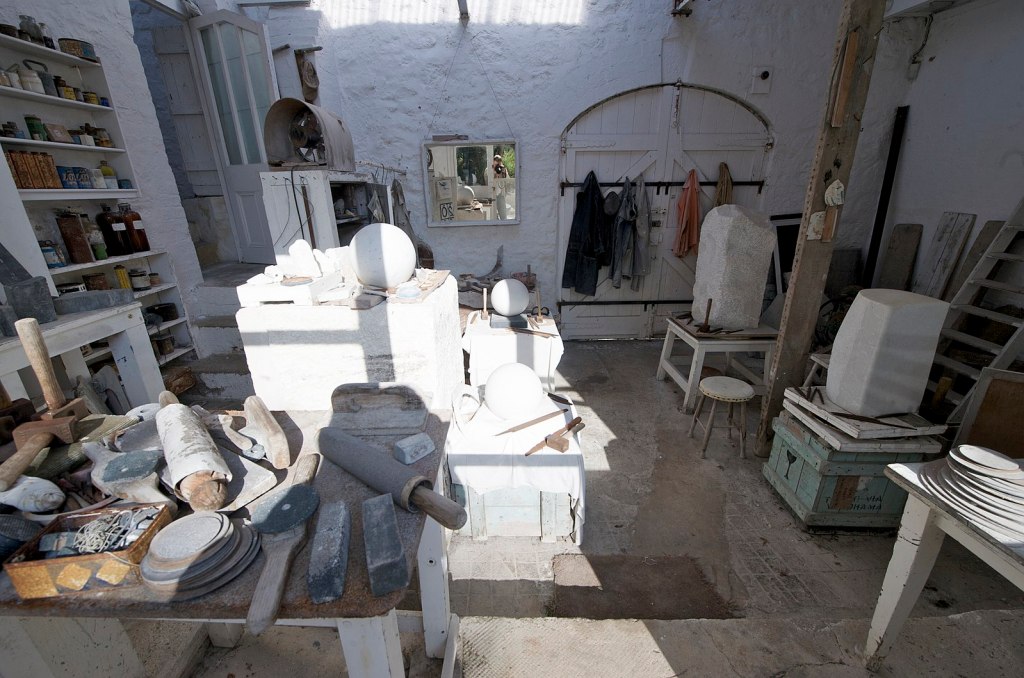
Barbara Hepworth Museum: St Ives
Barbara Hepworth lived and worked at Trewyn Studio in St Ives first with her husband Ben Nicholson and their family during the outbreak of war in 1939. Ten years later, in 1949, she returned to the residence alone and stayed until her tragic death in 1975, in an unexpected fire. It’s where she made some of her most influential works, inspired by the salty sea air and rugged Cornish landscape.
The home has been kept in pristine condition and is now the Barbara Hepworth Museum, exhibiting bronze, stone and wood sculptures, many of which are claimed to sit in the exact same spot that Hepworth placed them. The Museum has a true studio feel, with Hepworth’s tools and her unfinished projects scattered around. The site is now managed by Tate. More on how to visit.
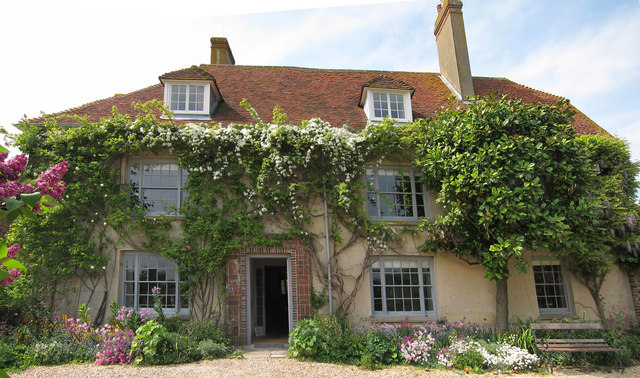
Vanessa Bell and Duncan Grant: East Sussex
Also in East Sussex, but perhaps lesser known to Australian readers, is the home of English painter and designer Vanessa Bell and fellow artist Duncan Grant – two central figures of the Bloomsbury Group (which included Bell’s sister, Virginia Woolf).
Their 17th century farmhouse, Charleston, can be found in the town of Firle, and was known as a regular meeting place for the group’s bohemian soirees. Every inch of the home is covered in artworks and objects, with many of the walls and fireplaces decorated with Italian frescoes or Post-modern daubs. The gardens were also redesigned by the couple with mosaics and sculptures. Charleston opened to the public in 1986. More information of how to visit.
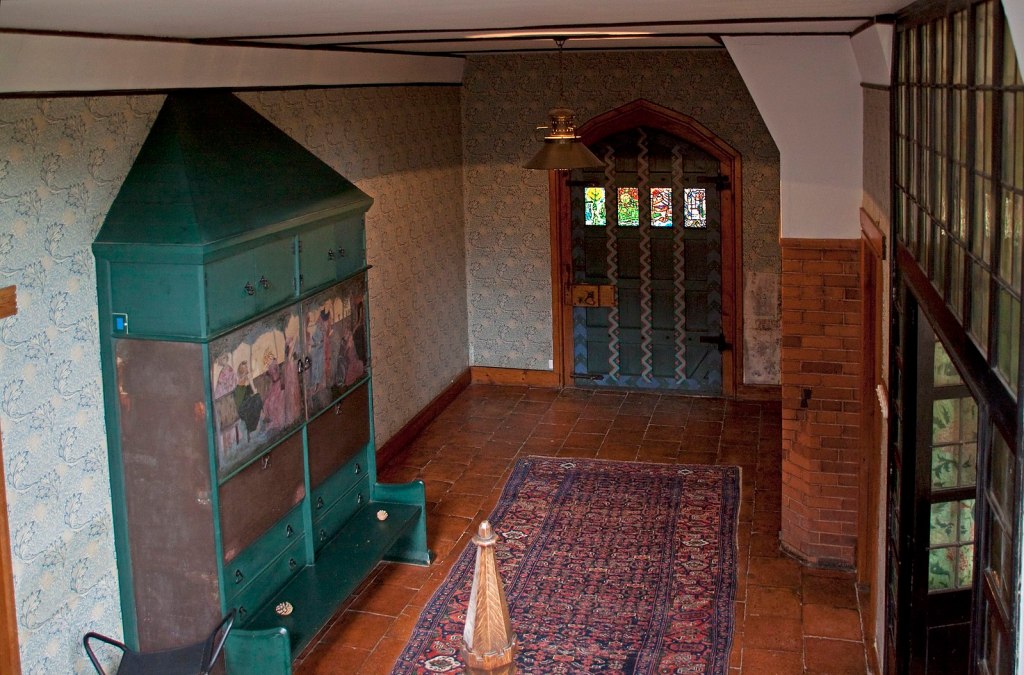
William Morris: Bexleyheath, London
William Morris was a figurehead in the Arts and Crafts movement – it’s no surprise, then, that his London home, Red House has ‘a folksy feel with touches of Gothic grandeur and art-deco design,’ as one writer describes. While many claim it was designed by Morris himself, it was actually by his close friend, the English architect, Philip Webb. However, furnishings, stained glass and other elements are by Morris.
It was while living at Red House that Morris co-founded Morris, Marshall, Faulkner & Co (later Morris & Co) his famous decorative arts label, with its iconic floral patterning. But Morris moved on, and the house sold a number of times before being donated to the National Trust. How to visit.
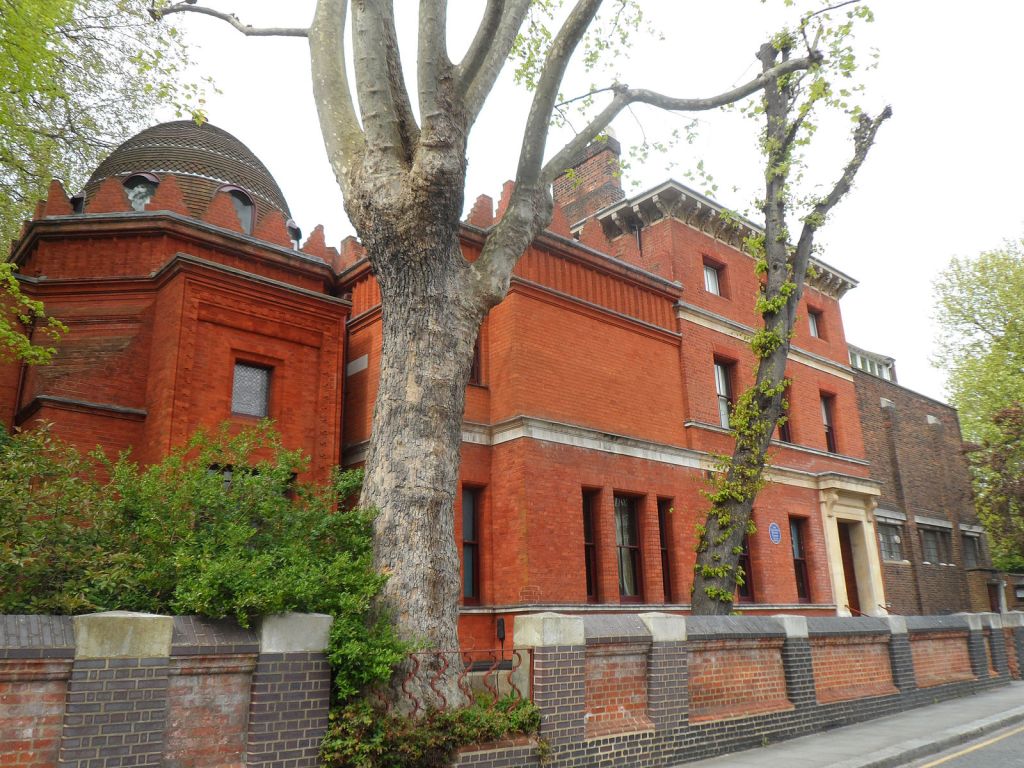
Frederic Leighton: Holland Park, London
Think languid beauties in Victorian settings, and you get the picture of the favoured subjects of 19th century British painter Frederic Leighton. Classical to the tee, his paintings were enormously popular during his lifetime (he was also a Baron and Sir), so his home is understandably opulent (with a capital O!).
Located in a quiet Kensington street near Holland Park in London, Leighton House has a relatively plain exterior, but step inside to discover a dazzling interior filled with eye-candy splendour of salon hung artworks in gilded frames, rare ceramics and plush furnishings. A highlight is the golden domed, mosaiced Arab Hall. How to visit.
US

Louise Bourgeois House: New York City
Louise Bourgeois moved to the artistic hub of Chelsea (347 West 20th Street) with her husband, art historian Robert Goldwater, in the 1960s. Following Goldwater’s death, her studio practice took over the townhouse, filling every room.
It is managed by The Eastern Foundation, which Bourgeoise set up in the 1980s and, upon her death, became custodian of her home and archive. The charm of the house is it is little altered – and has a palpable energy as the site of making her most iconic artworks. Guided group tours of Bourgeois’ home, studio, archive and sculpture garden can be scheduled by appointment. Learn more.
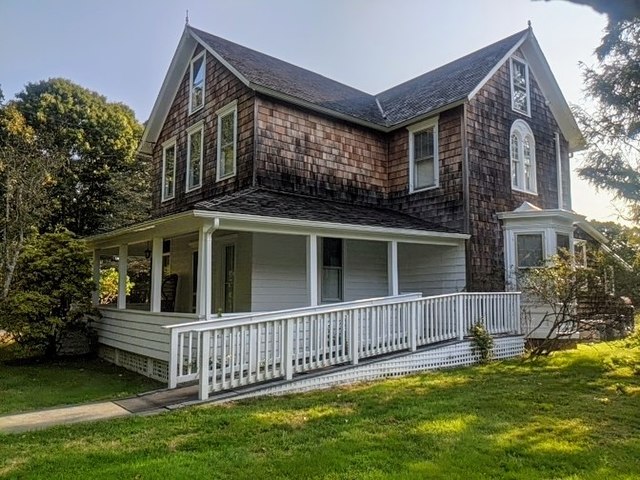
Pollock-Krasner: Springs, Long Island (NY)
Anyone who has watched the film Pollock will have a sense of the home that the famed Abstract Expressionist painter Jackson Pollock shared with wife and fellow artist Lee Krasner. The farmhouse is located in Springs, a small town on Long Island, and it is rumoured that they sold art to Peggy Guggenheim for a loan to purchase it in 1945.
After Pollock’s death in 1956, Krasner stayed on until the 1980s. Today it is both a research centre and museum, left intact with paintings, books and furnitures – as well as Pollock’s famed paint dribbles on the barn floor. More information on how to visit.
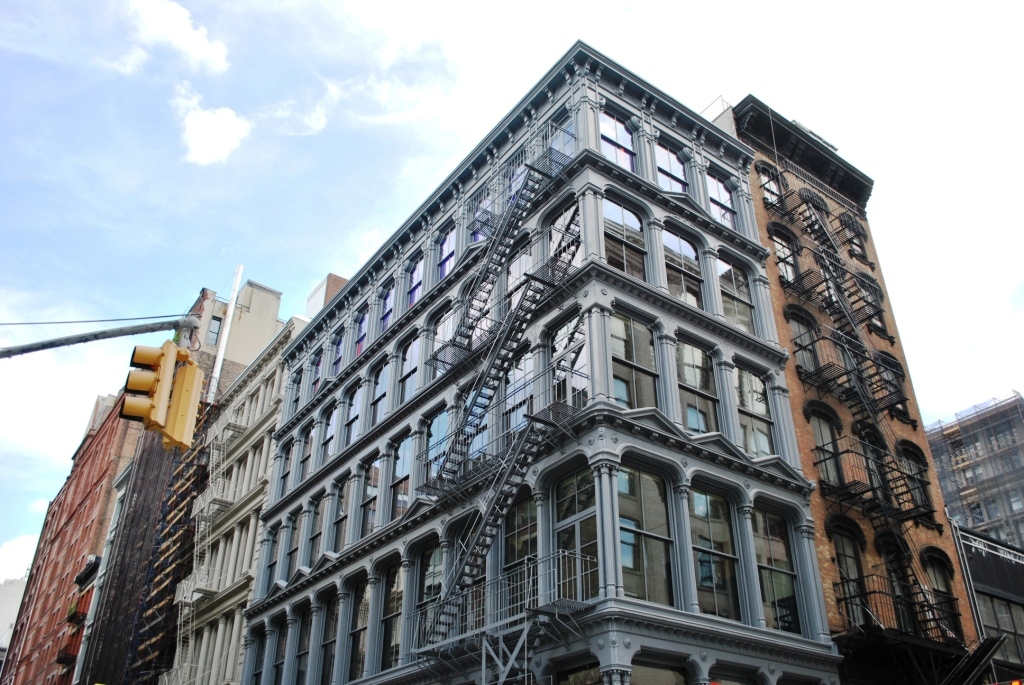
Donald Judd: New York City
Donald Judd changed how we thought about sculpture. His SoHo home and studio at 101 Spring Street, New York is in a classic cast-iron building, and former garment factory. He bought the five-storey building in 1968, and the Judd Foundation completed a significant (aka US$23 million, approximately AU$34 million) restoration in 2013.
Judd collected the art of many colleagues – such as Carle Andre, Dan Flavin, Claes Oldenburg, plus Marcel Duchamp and Kurt Schwitters, among others – some 1000 artworks and objects that make up this museum today. Guided tours are led by artists, and advance reservations are required. More information on how to visit.
Plus, Judd also began spending time in Marfa, Texas in the early 1970s, building several buildings to create an enclave of studios, permanent artworks and a residence. It can also be visited and is part of the Chinati Foundation.
Georgia O’Keeffe: Abiquiú, New Mexico
Georgia O’Keeffe maintained two homes in northern New Mexico. She had a summer house 19 kilometres from Abiquiú, on a 8500-hectare property called Ghost Ranch (now a retreat centre) and a home in the village of Abiquiú – 84 kilometres north of Santa Fe. Both are owned by the Georgia O’Keeffe Museum, but only the Abiquiú Home and Studio are open for public tours.
The architecture has Native American and Spanish Colonial overtones, with the oldest part of the structure dating back to 1744. It was in ruins when she bought it in 1945 from the Catholic Church. She lovingly restored it and lived there until she died in 1986. The O’Keeffe Home and Studio was designated a National Historic Landmark in 1998 and is part of the Georgia O’Keeffe Museum. Plan your visit.
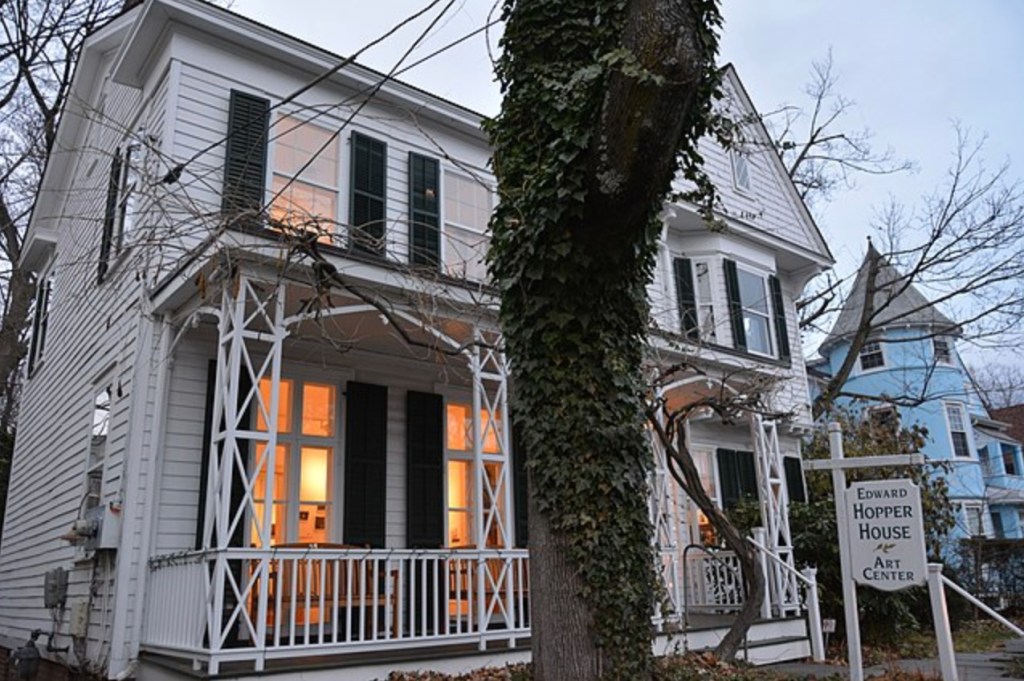
Edward Hopper: Nyack, New York
Not many can say they grew up in a house built by their grandfather. US artist Edward Hopper can. Now known as Edward Hopper House Museum and Study Centre, this 1858 structure can be found in Nyack on the Hudson River. The house fell into disrepair after his death and was restored by the local community. It is now a thriving art centre, gallery and museum.
Europe
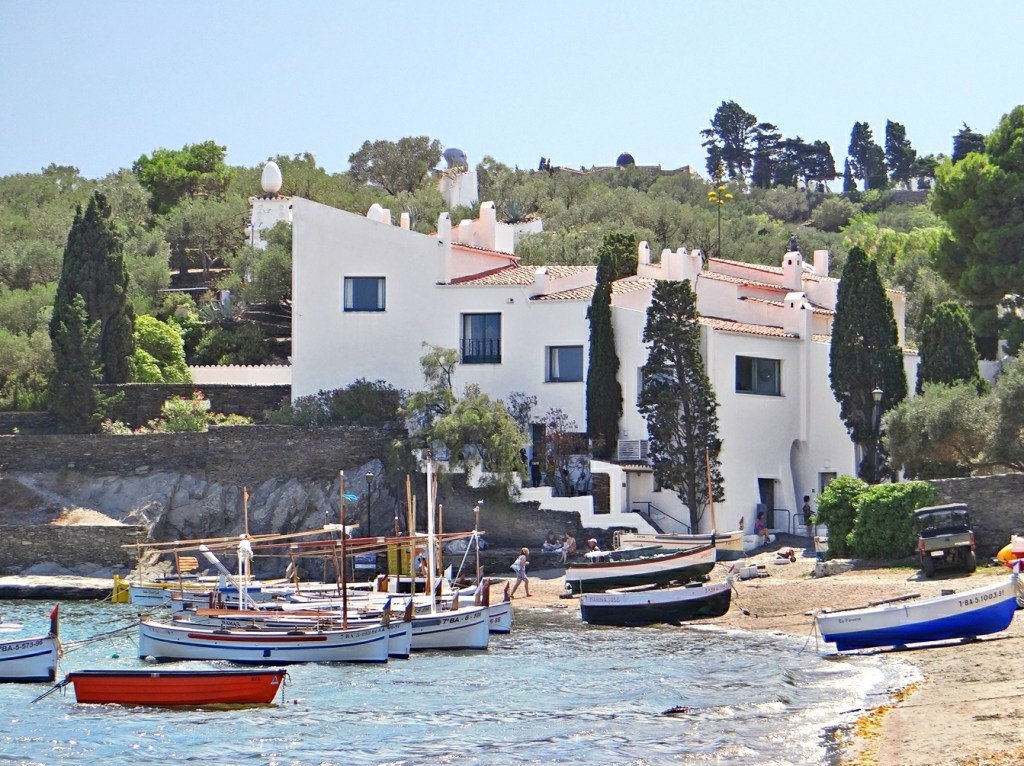
Salvaldor Dalí: Portlligat, Spain
What started out as a fisherman’s shack became the home of one of the most celebrated artists of all time – Salvador Dalí. Idyllically overlooking Portlligat bay, the asymmetrical structure is a “rabbit warren” of rooms added over a 40-year period – a new wing for a library or workshop and so on. All are whitewashed and stuffed full of books, paintings and objects. Dalí bought the house in 1930, and it became his principal residence and source of inspiration. If you are travelling to Portlligat you can arrange a tour. For more details, or take a virtual tour.
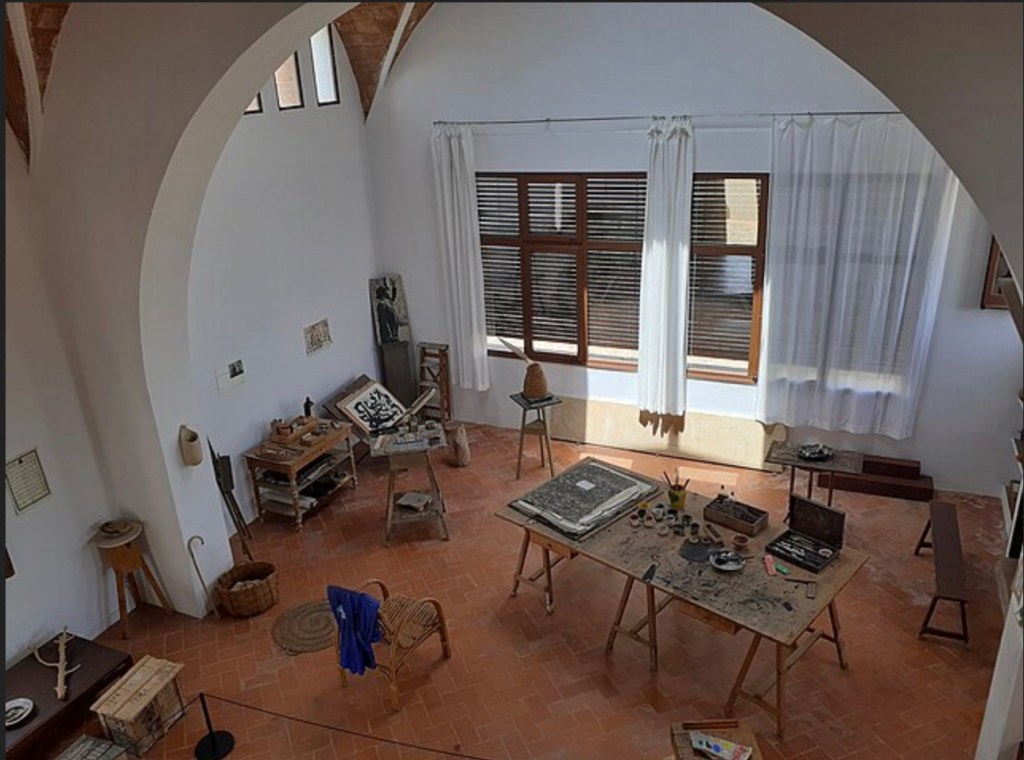
Joan Miró: Mont roig del Camp, Spain
Joan Miró moved around a lot and lived in many of the big cities; however, this stunning farmhouse in Mont-roig in Spain – known as Mas Miró – was the family’s carob farm and the place where he loved to paint. It was his final home from the 1950s until his death.
It is a sprawling estate and beautifully restored as a museum – including Miró’s studio with its dramatic Catalan vaulted ceilings and claybrick-tiled ceiling and floor, built in 1940. More information on how to visit.
You can also visit Miró’s studio in Mallorca (where he worked 1956-1983), which is now home of Fundació Pilar i Joan Miró a Mallorca.
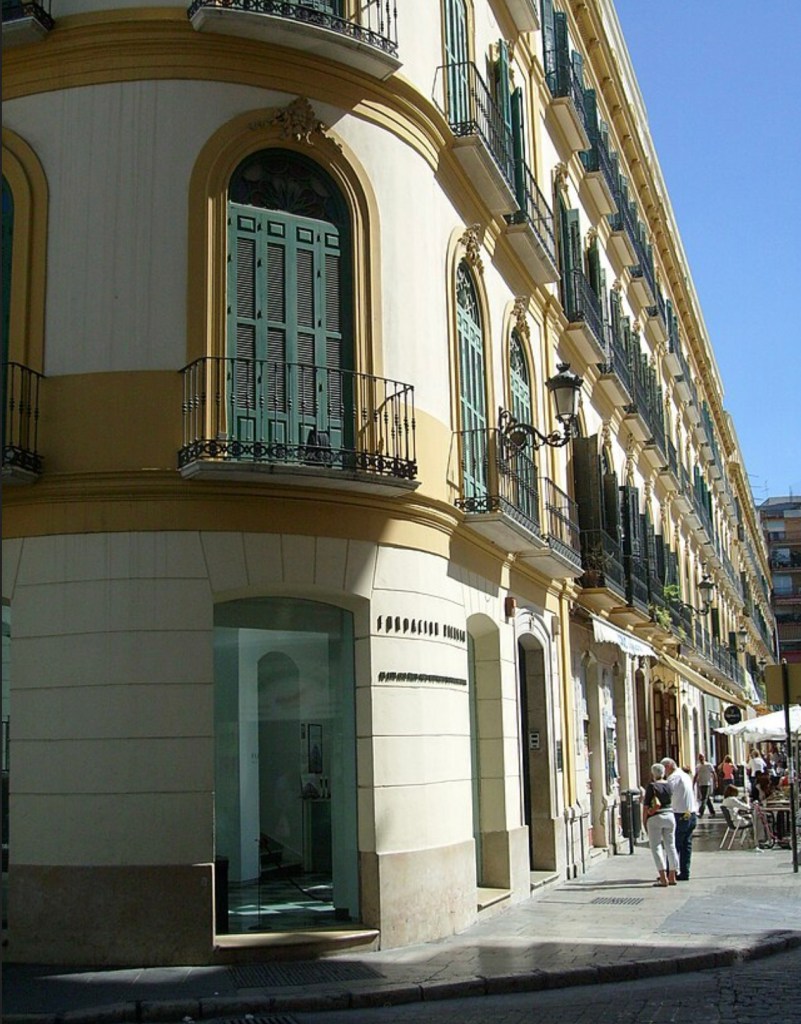
Pablo Picasso: Malaga, Spain
Located in the heart of Malaga’s historic centre, on the Plaza de la Merced, Casa Natal is more than just the birthplace of Pablo Picasso. The museum also contains personal artefacts from Picasso’s personal life, over 3500 examples of contemporary art by more than 200 artists, and a complete research library.
While Picasso only spent the first two years of his life at this address, Malaga remained his home. It has been an official heritage site since 1983 and, in 1998, the historic building was taken over by the Picasso Foundation as its headquarters. And the bonus – it is just a short walk to the larger Picasso Museum. Learn more.
Pierre-Auguste Renoir: Essoyes, France
Pierre-Auguste Renoir was an artist of modest means when he bought a house in Essoyes in 1896, a small Champagne village. He lived there with is model and mistress Aline Charigot. In 2017 House of Renoir in Essoyes opened its doors to the public, and the small town has become a destination for fans. In addition to the home and garden, a walking tour of the village highlights spots where he often painted his models en plein air.
The property has undergone an extensive EUR€1 million (AU$1.63 million) restoration since Renoir’s granddaughter handed it over to the foundation in 2012. More on the museum. It should not be confused with his home at Cagnes-sur-Mer in the French Riviera, where he spend his final 12 years.
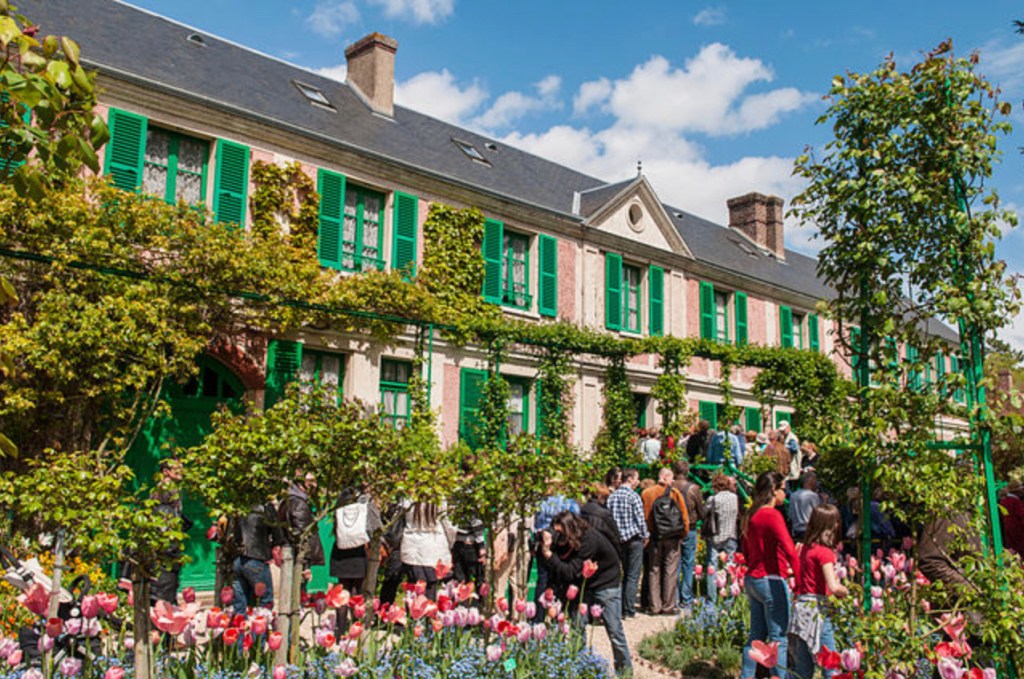
Claude Monet: Giverny, France
Arguably one of the most famous artist’s house museums is Claude Monet’s home in Giverny, where he spent over four decades. Located an hour north-west of Paris, in a small Normandy village along the Seine in, the house is where he settled in 1883 and stayed until his death in 1926. Recognised by its emerald shutters, it is just as well-known for its gardens – and, yes, that famed Japanese bridge and water garden. It has been describes as ‘stepping into one of his paintings’. It is crazy popular, so plan your visit.
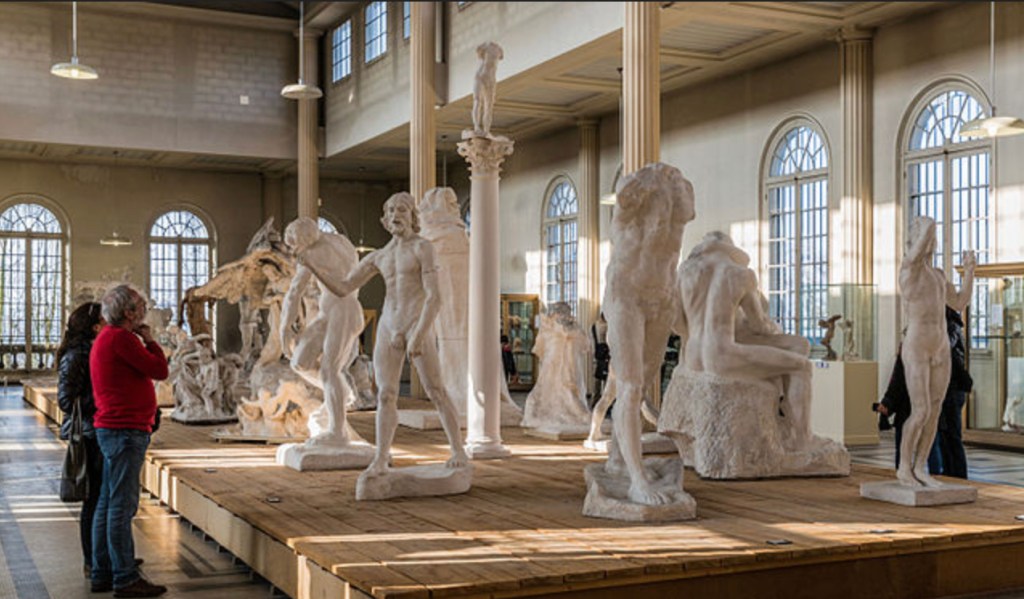
Auguste Rodin: La Villa des Brillants, Meudon, France
Auguste Rodin bought this villa in the Parisian suburb of Meudon in 1895 and, by 1900, it was a hub for his creative activity, with around 50 assistants, casters and sitters working there. He lived there for the last 20 years of his life. A sure highlight is the collection of casts of some of Rodin’s well-known sculptures, which visitors are allowed to touch.
Rodin’s tomb, surmounted by The Thinker, is located in the vast park overlooking the Seine valley. The Meudon museum opened in 1948. For fans, don’t forget to visit the Musée Rodin in Paris, which was formerly the Hôtel Biron. Rodin bought it and bequeathed it and all his works to the French state in 1916, a year before his death. It opened as a museum in 1919, making it possibly the oldest. Plan your visit.
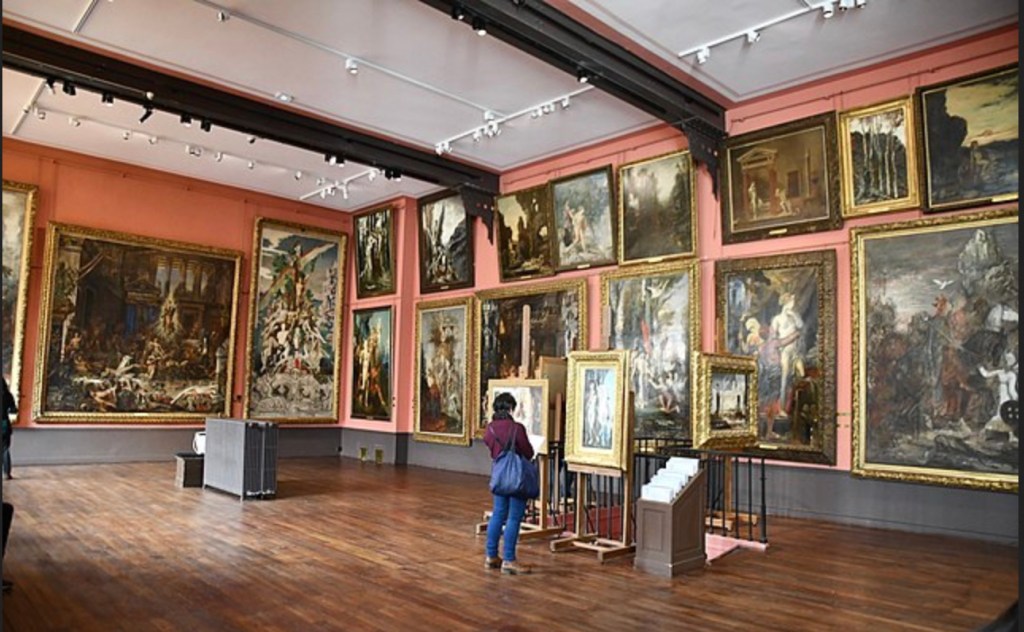
Gustave Moreau: Paris
Towards the end of his life, painter Gustave Moreau decided he wanted to create a museum dedicated to his work. For some that may seem a gesture of great vanity, but it is an incredible legacy. He was committed to this idea, holding back key paintings and storing them at rue de La Rochefoucauld.
He first lived here with his parents only having a small studio, but in 1895 effectively reversed that – moving into a small first floor apartment and opening up the second and third floors into vast studios with windows. Some 50 years of his works are shown here and can be visited. He bequeathed house and contents to the state in 1897. It is a cracker to visit with its striking orange stucco façade and jaw-dropping salon-hang of paintings. Learn more and plan your visit.
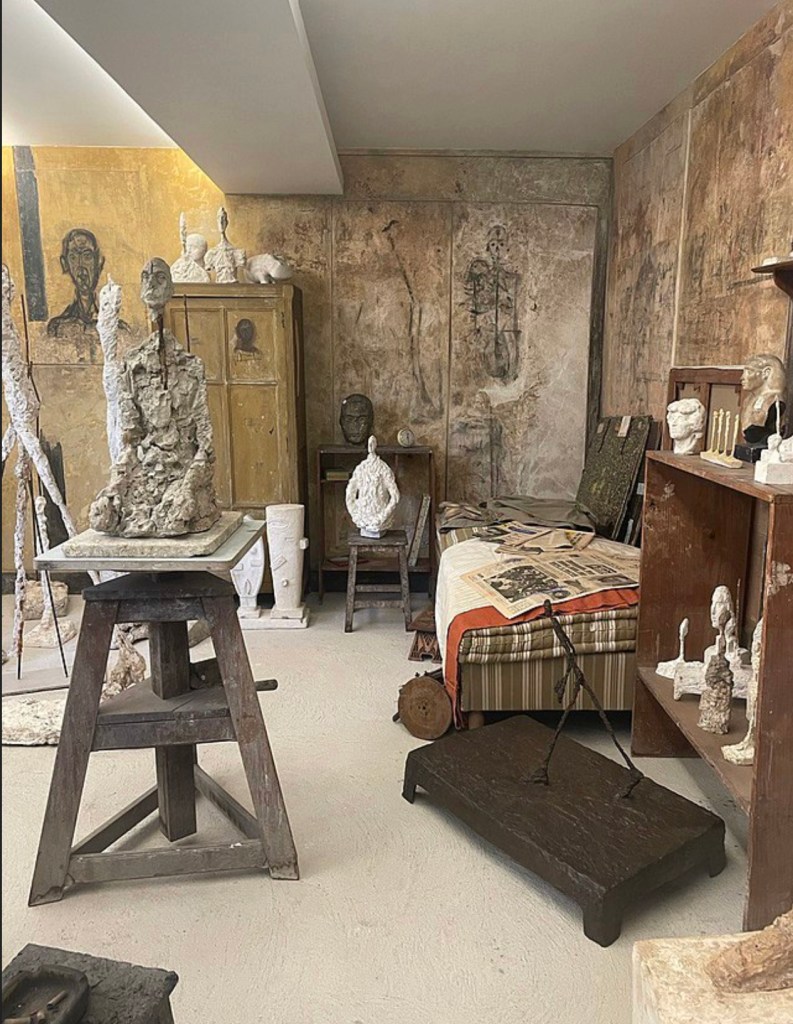
Alberto Giacometti: Montparnasse, Paris
Alberto Giacometti’s name is synonymous with post-war bohemian Paris. The celebrated sculptor’s Montparnasse studio is described as ‘inseparable from the artist’s legend’, where he lived for 40 years, covering the walls with drawings.
That studio has been reconstructed by the Giacometti Institute and today is a fabulous museum to visit. Giacometti’s wife Annette kept many of his things on show, including fragile plaster sculptures, his furniture and murals. Over 70 artworks are on show.
Carl and Karin Larsson: Sundborn, Sweden
With a fairy-tale quality, the home of illustrators and artists Carl and Karin Larsson is a favourite to visit in Sweden. The home was gifted to them by Karin’s father in 1888, and inside is a delight of locally made furniture, tapestries, hand-painted murals, arts and crafts. It also has a great garden and café. Described as Sweden’s ‘most famous home’, it is located 13 kilometres north-east of Falun in the village of Sundborn. Admission is by hour-long guided tour.

